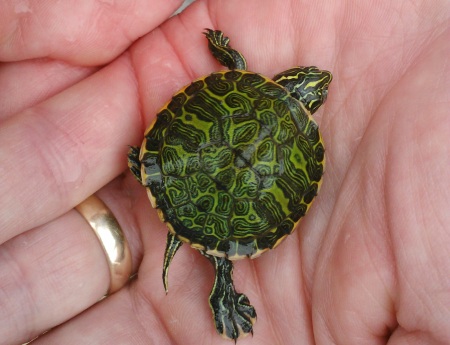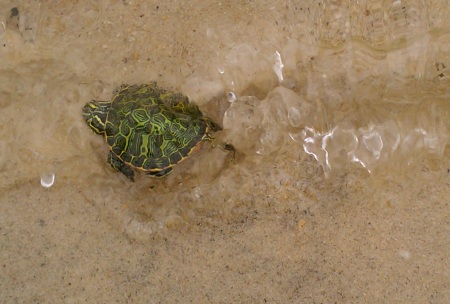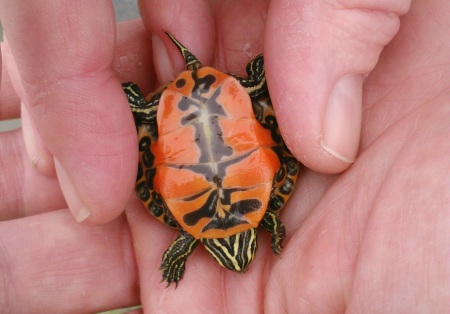
Photo: Rebecca Kennedy/Pennsylvania Environmental Council
The Philly Watersheds Blog is not in the habit of posting photos of baby animals for the sake of posting photos of baby animals (although it is Friday, and who among you would blame us?), and so we inform you that this red-bellied turtle hatchling was spotted earlier this week near the Tacony-Palmyra Bridge along the Delaware River. More specifically, the turtle was observed at Lardner's Point, a brand new four-acre city park on the site of a former ferry terminal where a 2004 oil spill occurred. "More than just a pretty park on a pier," writes Sandy Bauers in an Inquirer article this week, "it is an ecological restoration that turned a concreted shoreline into a freshwater marsh, thick with plants and beneficial to wildlife."
As if to illustrate the point, this red-bellied turtle—a threatened species in Pennsylvania—showed up on the newly restored sandy beach. According to eyewitness accounts, the turtle had one eye, was feisty, and was last seen paddling back into the river. It's possible the turtle made his way across the river from the Palmyra Cove Nature Park in New Jersey, which has a red-bellied turtle population.
More photos below—happy Friday, everyone.

